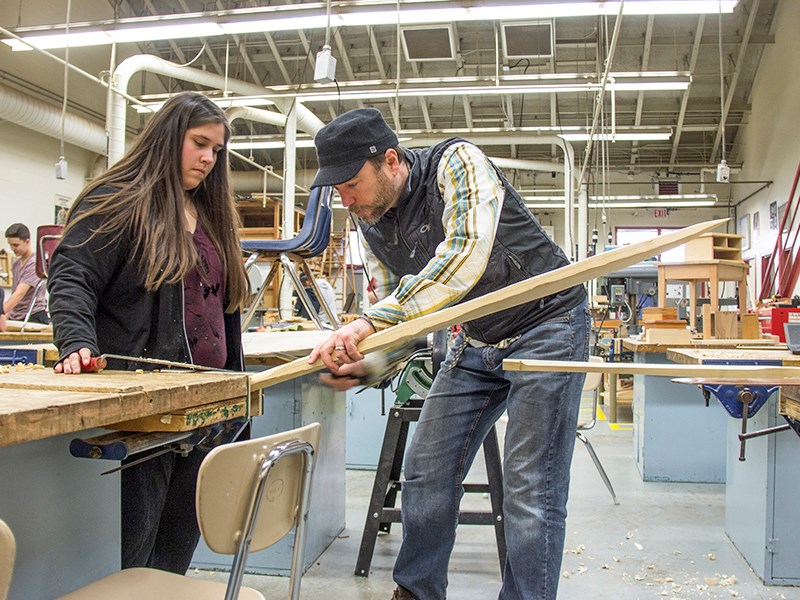When first nations artist Ivan Rosypskye was attending school in Powell River, there was “nothing like this class.”
The class he spoke of is the Paddle Project, available to Brooks Secondary School students because of a new timetable and structure that allows for study in a particular subject they are passionate about.
The class is called an X-block course, or a “passion block.” The paddle project is an opportunity for seven students who chose to undertake an inquiry into the many purposes of the traditional first nations paddle that propelled canoes on coastal waters for millennia.
“I love the metaphor of the paddle and moving forward together,” said Brooks teacher and class facilitator Ryan Barfoot. “I love the conversations around reconciliation, I love the opportunities and teaching the moments that are presented through this project.”
As a social study, the paddle project raises many questions in class, such as how and where paddles are used, what their traditional role is, the different purposes they were used for and how to say “paddle” in the Tla’amin language.
According to Barfoot, students are becoming more educated about first nations and how they lived along the Pacific Northwest coast.
Barfoot has invited first nations educators and mentors from the community, such as Rosypskye, into the class.
Rosypskye said he tells students his own stories as a first nations person and guides them in carving their first cedar paddle. He was denied these lessons when he was going to school in Powell River, he said.
“I was so naive, thinking I was going to learn about native culture,” said Rosypskye. “There was nothing, they skipped the native culture. I didn’t like school, I saw through it. I didn’t trust it.”
Now, Rosypskye said he is able to tell his story to students through his life experiences and his art.
“I’m able to tell them the truth about residential schools,” he said, adding that he is able to be more candid than teachers would be. “The history about how I was brought up, my culture, feeling that I was ripped off, not understanding why white people own everything, the prime land, why do they have the best jobs?”
Barfoot said that by the end of the class, when students have completed carving their paddles, they will have a much better understanding of the concept of reconciliation.
“There are a few things that are unique about carving a paddle,” he said. “It’s symbolic; moving forward together in reconciliation, being in the same boat together.”
According to Tla’amin educator Louise Dominick, who works with student support instruction at Brooks, the young carvers also learn about themselves.
“They learn about the patience, the teachings of the wood and developing,” said Dominick. “In our tradition, if you make something, the first time you give it away, so it comes back to you all the time. That’s part of our teachings.”
Brooks student Dakota Gustafson, 14, said she wants to know how to make a paddle because of her Tla’amin heritage.
“I decided to take this class to learn more about my culture,” said Gustafson. “I’ve learned a little bit about how they made paddles back then, especially learning how the wood guides you.”
According to Barfoot, the ceremonial element of gifting a paddle, after all of the energy, passion, difficulty and frustrations in carving it, is a difficult concept for a young person in the 21st century to grasp.
“They put so much time and energy into it,” he said. “It’s this beautiful dance between the work and the sharpening of the knives, and the carving of the wood, and then the pausing, and the reflection, and the conversations, and back to the carving.”
At the end of it all, the lesson learned, according to Rosypskye, is simple and that is “you can’t go very far without a paddle.”



